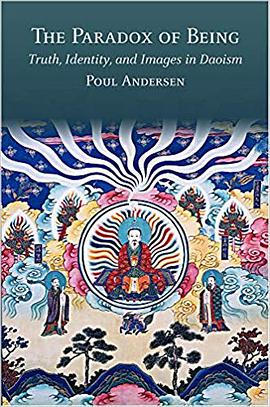The Paradox of Being
豆瓣
Truth, Identity, and Images in Daoism
Poul Andersen
简介
The question of truth has never been more urgent than today, when the distortion of facts and the imposition of pseudo-realities in the service of the powerful have become the order of the day. In The Paradox of Being Poul Andersen addresses the concept of truth in Chinese Daoist philosophy and ritual. His approach is unapologetically universalist, and the book may be read as a call for a new way of studying Chinese culture, one that does not shy away from approaching “the other” in terms of an engagement with “our own” philosophical heritage.
The basic Chinese word for truth is zhen, which means both true and real, and it bypasses the separation of the two ideas insisted on in much of the Western philosophical tradition. Through wide-ranging research into Daoist ritual, both in history and as it survives in the present day, Andersen shows that the concept of true reality that informs this tradition posits being as a paradox anchored in the inexistent Way (Dao). The preferred way of life suggested by this insight consists in seeking to be an exception to ordinary norms and rules of behavior which nonetheless engages what is common to us all.
contents
List of Illustrations*
Acknowledgments
A Note to the Reader
Introduction
1. Truth and Subjectivation
East–West Differentiation
The Chinese Self
The Daoist Self
2. Truth and Knowledge
Truth, Knowledge, and Propositions
Propositions in Chinese Thought
Truth and Divination in China and the West
The Pursuit of Truth in Early Daoism
3. The Concept of Zhen (真): True and Real
The True Self
Cosmologies of Substance
Early Daoist Discourses on Truth
Later Daoist Discourses on Truth
True Writings and True Writs
Translation Conventions
4. Liturgical Symbols and Images
The Ritual Event
The Ritual Walk
The Absent Way and Daoist Temporality
Ritual Images
Ritual Symbols
The Romantic Concept of the Symbol
Real Images
Inwardness
Visualization
External Images
5. Unity and Identity
Unity and Diversity in the One God
The “One-Source Paradigm”
The History of Taiyi
The History of Puhua Tianzun
The Iconography of Puhua Tianzun: Ti and Yong Forms
Entering the Way through Sincerity
Being One with the God
Ontology of Images
6. Sincerity and Ascent to Heaven
The Ascent to Heaven in Present-Day Daoist Ritual
Submitting the Petition in the History of Daoism
Modern Versions of Submitting the Petition
The “Mode of Sincerity”
The Social Identity of a Daoist Priest
Outer and Inner Registers
External Representations of the Gods of the Registers
Being and Appearance
Closing Remarks
Notes
Bibliography
Index
* Illustrations
Figures
1. Chart of Cultivating True Being (Xiuzhen tu)
2. True Writ of the Center
3. The magic square and the arrangement of the Eight Trigrams according to the Writing of the Luo River (Luoshu)
4. The Guideline of Returning to the Altar (Huitan gang)
5. Diagram of Chen Rongsheng’s sacred area for the jiao liturgy
6. Diagram of the journey to Heaven
7. Puhua tianzun riding on a nine-headed phoenix
8. Puhua tianzun as the Thunder Ancestor (Leizu)
9. Summoning the Nine Numinous and the Three Essential Spirits from the body
10. Chen Rongsheng impersonating Jiuku tianzun in the rite of Universal Salvation in Jiayi, Taiwan
11. Zeng Chunshou and Lai Longfei performing the Announcement of the Jade Altar in Hunei, Taiwan
12. The journey to heaven performed by Chen Rongsheng in Jiali, Taiwan
13. Diagrams of the journey to heaven
14. Liang Huaying performing a journey to heaven in Cangnan, Zhejiang
15. The journey to heaven in Daozang biyao
16. Register of the Generals of the Three Primes (Sanyuan jiangjun) from Taishang sanwu zhengyi mengwei lu
Plates
1. The Great One (Taiyi)
2. Jiuku tianzun in a hanging scroll by a painter from Quanzhou, Fujian
3. Puhua tianzun in a hanging scroll by a painter from Quanzhou, Fujian
4. Puhua tianzun emerging as the Lord of the Nine Heavens Transforming All (Jiutian puhua jun)
5. Puhua tianzun at the center of the Thunder Department (Leibu)
6. Numinous Official Wang (Wang Lingguan)
7. “The Way is entered through sincerity.”
8. The journey to heaven performed by Lai Longfei in Hunei, Taiwan